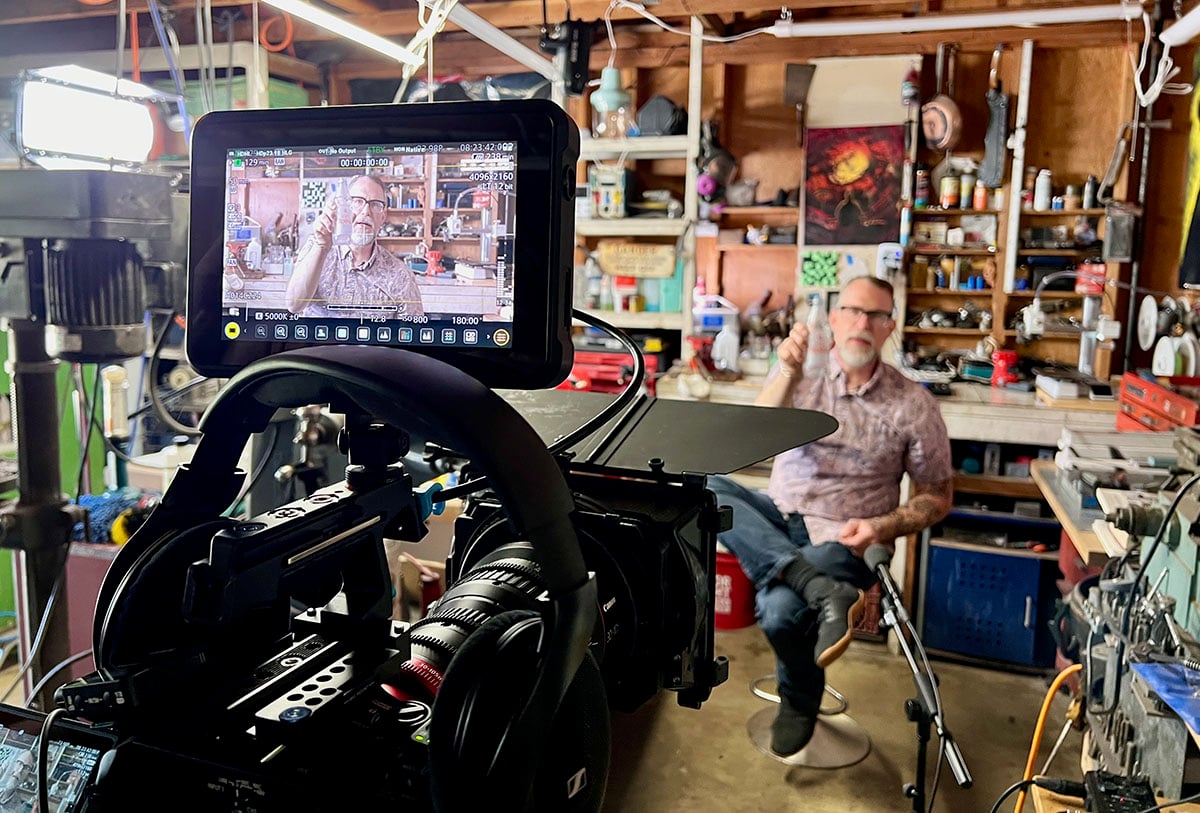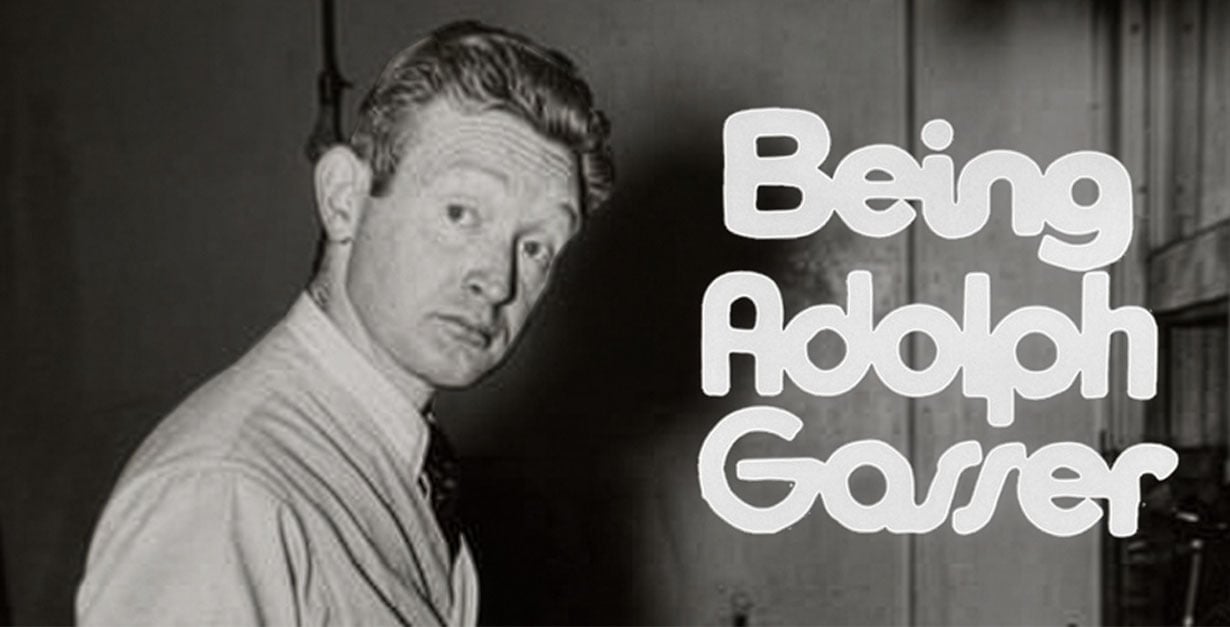John C. Aliano is an award-winning producer, director and cinematographer who has taught film production classes in Northern California and is now a professor in the Videography & Film Program at the College of Southern Nevada in Las Vegas. In the late 1990s, Professor Aliano worked at Adolph Gasser Inc. as manager of their Motion Picture Department. During that time, he was inspired by what he learned about the life of the company’s founder, Adolph Gasser. Aliano began shooting interviews with Mr. Gasser in 2003, and he’s been working on completing Being Adolph Gasser ever since. Happily, the documentary had its initial screening in September, 2025. Below, Professor Aliano shares some behind the scenes moments and documentary lighting tips from his experience.
About The Film
Being Adolph Gasser is a documentary about the extraordinary life of an ordinary person. I started filming Adolph Gasser in and around his San Francisco based store, Adolph Gasser Inc., in 2003 and followed him until his passing in 2006 at the age of 94. He started his camera repair business in the late 1930’s and the last store closed in 2017 due to the challenges of eminent domain, a changing landscape of technology and business, as well as his son wanting to retire from the industry.
The documentary explores the legacy of Adolph Gasser:
- A WWII veteran, he was instrumental in providing the camera that filmed the atomic bomb blast over Hiroshima to the tail gunner of the Enola Gay.
- He was a key contributor to the development and U.S. distribution of the first Nikon cameras.
- As the best friend of world renown photographer Ansel Adams, he built his darkrooms in San Francisco and Carmel, CA, as well as the 8×10 Enlarger device that allowed Adams to create mural-sized prints of some of the most famous images of the 20th century.
Two Tips For Documentary Lighting
One of my favorite shots in the film is of a 16mm film reel turning during a sequence about the formulation of the Film Arts Foundation and their screenings at Adolph Gasser Inc. We captured these insert shots inside my garage, which I had layered in duvetyne to help absorb light and build the high contrast look I was trying to achieve.
We lit the reel, which has an actual film from one of my cinematography workshops taught in 2000, using a Rosco DMG MINI™ with a Dome Diffuser for key light and a DMG DASH® for fill. The quality of the image is outstanding, and the simplicity of setup was a major plus. Many people have commented on the quality of this image. A brief moment in that sequence features one of the former Adolph Gasser, Inc. employees from 2003, and it shows just how far the medium has come since using MiniDV tapes as a form of documentary capture. In comparison, the footage of the 16mm reel is 4K raw lite that was captured with a high-quality cinema camera and lenses.

The final shot of that sequence is of Adolph Gasser’s grandson in his garage. For that shot, we used a DMG MINI again, this time to simulate sunlight coming through the garage door. This was our key light for the subject, and we used a reflector for fill light. The contrast ratio is 12:1 (3 ½ stops) on the face and the dynamic range perfectly balanced.
Why DMG Lights Are Great For Shooting Documentary Films

If you’re asking, what lights should I use to light my documentary film? Rosco DMG Lights are a
great choice!
What makes the Rosco DMG Lights so effective for documentary filmmakers are several factors:
- They are very well made and they handle the robust nature of filmmaking chaos. They also travel with ease. I shoot a lot of documentary footage, and my two main lights are the DMG DASH and the DMG MINI.
- They are reasonably priced lights for shooting documentary films, considering their high-quality output and their high CRI/TLCI values.
- They are easy to use, and the full DMG Lighting lineup – from the pocket-sized DASH to the large DMG MAXI™ units – makes color and quality matching between all of the fixtures a breeze.
- These lights give me the ability to create images that closely resemble a cinematic look in color, contrast and clarity.
- The customer support from Rosco is excellent. Throughout my 30 years of using Rosco products – from gels to backdrops to lights – I have always had all the support I ever needed.
Reviews after the initial screening of Being Adolph Gasser at the Smith Rafael Film Center on September 20, 2025, were extremely positive. For more information about the film, including further details about its film festival progress, please visit beingadolphgasser.com. To learn more about the DMG Lighting fixtures John Aliano used to light his documentary film, please visit rosco.com/dmg.


